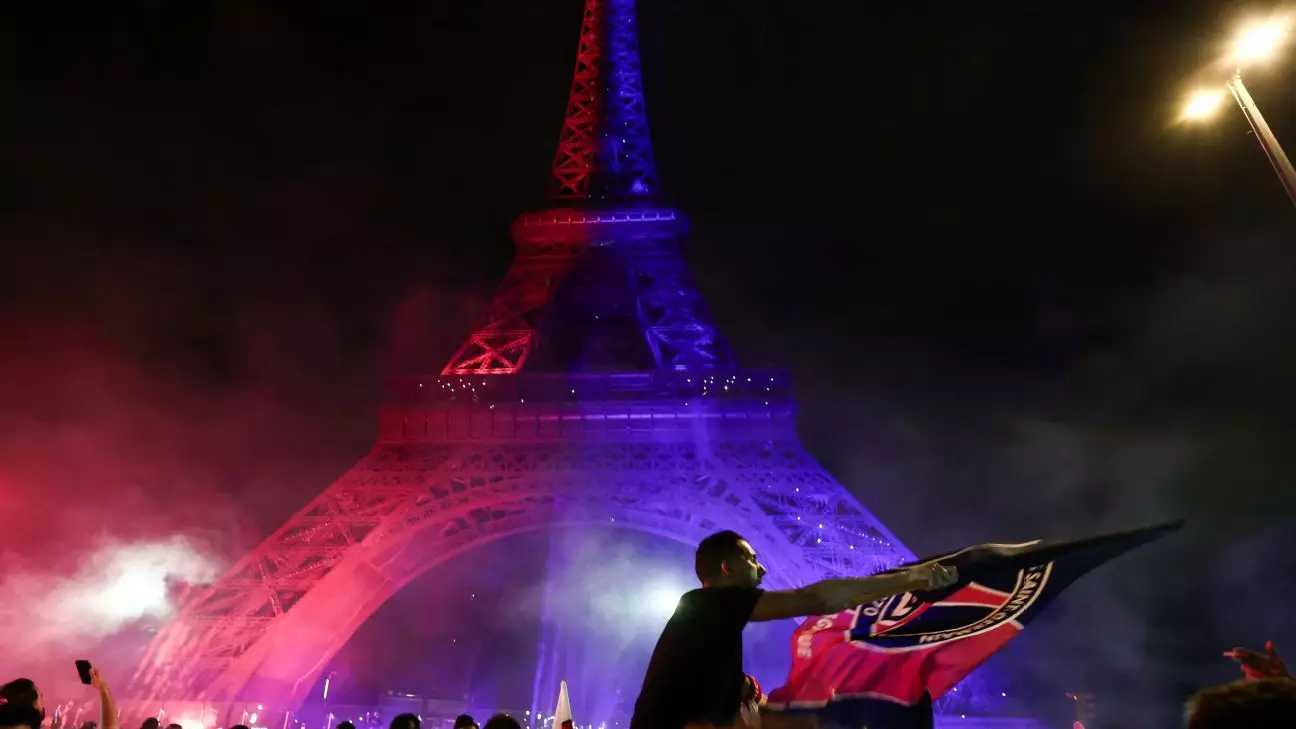The ecstatic atmosphere that enveloped Paris Saint-Germain’s (PSG) momentous Champions League victory is a potent reminder of the dual nature of public celebrations. What began as jubilant revelry in the French capital took a sinister turn as tragedy struck, casting a long shadow over an otherwise historic night. The loss of two lives—a 17-year-old boy stabbed in Dax and a man in his twenties who died when his scooter was struck by a vehicle—is a heart-wrenching juxtaposition to the celebratory fireworks and the Eiffel Tower bathed in team colors. This tragic outcome starkly highlights the inherent risks of mass gatherings, especially when emotions run high.
It is nearly impossible to extricate the joy of victory from the pain of loss in such complex circumstances. Celebrations like those witnessed after PSG’s momentous win inevitably draw a diverse crowd, and unfortunately, among this multitude lurk individuals whose intentions are less than honorable. The celebration became a scene not just of football pride but also of chaos and violence, leading to a barrage of injuries and the unsettling image of a police officer thrust into a life-threatening coma due to a fireworks incident. This is not merely an aberration; it reflects a troubling trend in how communal celebrations are frequently marred by outbursts of violence and disorder.
The Role of Authority and Public Safety
The response by law enforcement during these celebratory events has come under intense scrutiny following such tragedies. Paris police chief Laurent Nunez aptly noted that the unruly behavior observed was largely fueled by “thousands of people who came to commit acts of violence.” However, this portrayal raises questions about how effectively security is balanced against public enjoyment. If the measures employed during the festivity—ranging from crowd control tactics to tear gas and water cannons—are aimed at maintaining peace, we must ask: at what cost are fans allowed to celebrate their victories?
Instead of freely expressing joy, those participating in the celebration found themselves navigating a minefield of anxiety and fear. The deployment of heavy security is a clear indication that while celebratory events can unite communities, they can also become battlegrounds when mismanaged. The stark dichotomy between joy and danger underscores the importance of creating a space where fans can express their excitement without fear of violence looming over them.
Cultural Reflection on Social Behavior
Paris is a city steeped in culture and history, where public excitement is as much a part of the landscape as its iconic landmarks. Yet, the rioting and looting that marred the celebration raises critical societal questions. Why is it that triumphant occasions sometimes unleash destructive behavior from segments of the crowd? The fact that 294 arrests were made, including looting incidents and vandalism, demonstrates a failure in community respect and social responsibility.
What this incident reveals about contemporary society is disturbing. The destruction of businesses and public property during what should have been a celebration signifies deeper issues of unrest and disillusionment among certain groups. It casts a pall on a historically joyous occasion; as people gather to uplift their teams, the presence of reckless few turns a moment of pride into one of shame. In essence, the behavior of a reckless minority has detracted from the remarkable achievement of a football club that has tirelessly pursued excellence.
The Need for Change in Celebration Dynamics
Moving forward, we must demand the implementation of better oversight and strategies to ensure safety and joy during large celebrations. While passion for sport invigorates community spirit, it should never detonate into violence or destruction. Sporting victories ought to foster unity and pride, and as citizens, we have an obligation to demand not only a celebration of triumph but also a commitment to responsible behavior in public spaces.
In the age of mass gatherings, it is essential for both authorities and fans to assume responsibility. As much as we crave the thrill and camaraderie of public celebrations, we must acknowledge that with great excitement comes a great need for mutual respect and accountability. True victory lies not only in the triumph of a team but in the ability of a community to come together constructively, celebrating in a manner that uplifts rather than destructively divides.

Leave a Reply